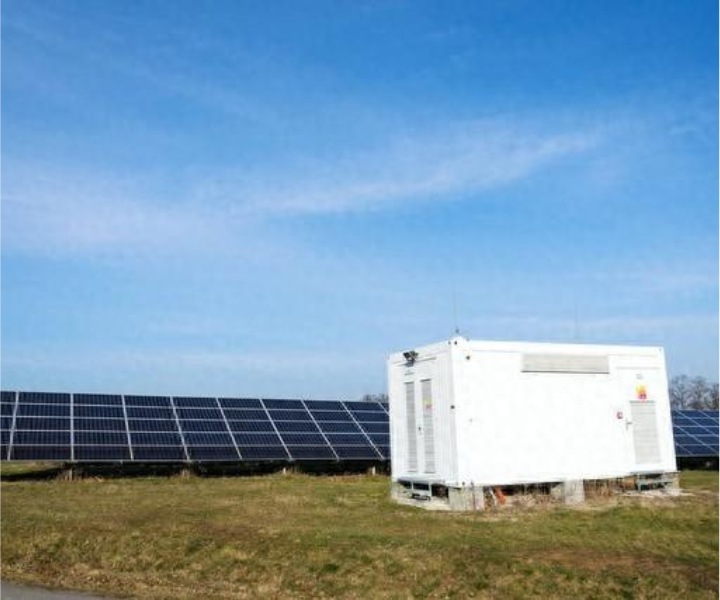With the rapid development of new energy (solar & wind power) projects worldwide, the demand for energy storage systems in the market is also rapidly increasing; in this post, we will talk about the material list for an energy storage system. 
The main equipment and material list for energy storage systems may vary depending on the system size, technology selection, and specific application requirements.
A general list of main equipment and materials for energy storage systems, including typical components and components:
1. Battery Energy Storage Unit (BESU):
1.1 Battery pack:
Lithium ion batteries, lead-acid batteries, sodium sulfur batteries, etc. are selected according to application needs.
1.2 Battery Management System (BMS):
BMS main control board, battery controller, temperature sensor, battery balancing circuit, etc.
1.3 Battery bracket and protection:
Battery pack bracket, protective cover, etc.
2. Connection components between battery and energy storage system:
2.1 DC switch:
Used to connect and disconnect the DC circuit between the battery pack and the battery system.
2.2 Power & control cables and connectors used in an energy storage system:
The cables and connectors between the battery pack and other systems, inverters, and chargers.
2.3 DC Circuit Breakers:
Used to disconnect circuits between the battery pack and other systems when necessary.
3. Inverters and conversion equipment:
3.1 Inverter:
Used to convert direct current into alternating current. Depending on the application, there may be multiple inverters.
3.2 DC/AC Converter:
Convert the direct current stored in the energy storage system into alternating current when needed.
4. Control and intelligent systems for an energy storage system:
4.1 Controller:
The main controller that controls and coordinates the entire energy storage system.
4.2 Intelligent Energy Management System (EMS):
A management system for monitoring, optimizing, and controlling energy.
5. Thermal management system for an energy storage system:
5.1 Cooling system:
Air cooling or liquid cooling system, used to maintain the battery pack within an appropriate temperature range.
5.2 Temperature sensors:
Used to monitor the temperature of battery packs and other critical components.
6. Safety and protective devices for the whole energy storage system:
6.1 Overcurrent protection device:
Used to protect the battery pack from damage caused by overcurrent.
6.2 Overvoltage protection device:
Used to prevent battery pack overvoltage.
6.3 Over temperature protection device:
Used to prevent battery pack overheating.
7. Support and peripheral equipment:
7.1 Supporting structure:
The supporting structure and installation foundation of equipment such as battery packs and inverters.
7.2 Ventilation system for an energy storage system:
A system for maintaining equipment ventilation.
8. Electrical and electronic components:
8.1 Electrical distribution equipment:
Main circuit breaker, circuit breaker, current transformer, etc.
8.2 Power capacitors:
Used to provide instantaneous electricity.
9. Monitoring and measurement equipment:
9.1 Battery voltage and current monitoring instrument:
Used to monitor the voltage and current of the battery pack.
9.2 System performance monitoring instrument:
Monitor the overall performance of the system, including energy storage and release.
10. Safety equipment for an energy storage system :
10.1 Firefighting equipment: fire alarms, fire extinguishers, etc.
10.2 Emergency stop device: a device that disconnects the power supply in an emergency situation.
11. Environmentally friendly materials:
11.1 Renewable materials: such as renewable plastics, recyclable metals, etc.
12. Installation and maintenance of equipment:
12.1 Installation Tools and Equipment: Tools used for installing and debugging energy storage systems, such as screwdrivers, wrenches, measuring instruments, etc.
12.2 Maintenance equipment: Equipment used for routine maintenance of energy storage systems, such as thermometers, battery testing equipment, etc.
13. Foundation and Support Structures:
13.1 Infrastructure: Provide support and fixed infrastructure for energy storage system equipment, including foundations, supports, etc.
14. System connection and monitoring equipment:
14.1 Data communication equipment: used for data transmission between various components within the system, including communication cables, wireless communication equipment, etc.
14.2 Monitoring equipment: A monitoring device used to monitor the performance of a system, such as battery status, charging and discharging efficiency, etc.
15. Environmental protection equipment:
15.1 Waste disposal equipment: used to dispose of discarded batteries and other equipment to ensure environmental compliance.
16. Safety signs and warning devices:
16.1 Safety signs: Safety signs and signs used to indicate hazardous areas, precautions, etc.
16.2 Warning device: a device that indicates the operating status of the system, fault warnings, etc.
17. Placement and installation materials:
17.1 Anti vibration and damping materials: Used to reduce vibrations and their transmission to energy storage systems, improving equipment stability.
17.2 Insulation material: an insulation material used for electrical isolation and protection.
18. On site construction and engineering equipment:
18.1 On site construction equipment: such as mixers, cranes, etc., used for the installation of energy storage system equipment.
PowerTel and his dedicated engineers are able to provide you a package solution for this energy storage system; custom design & on-site installation will help you to buid an engery storage system with a most lowest cost and a shortest project timeline.
